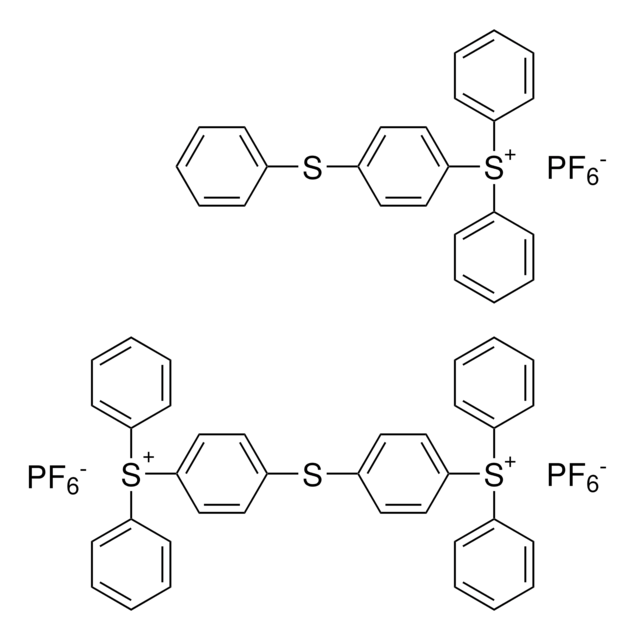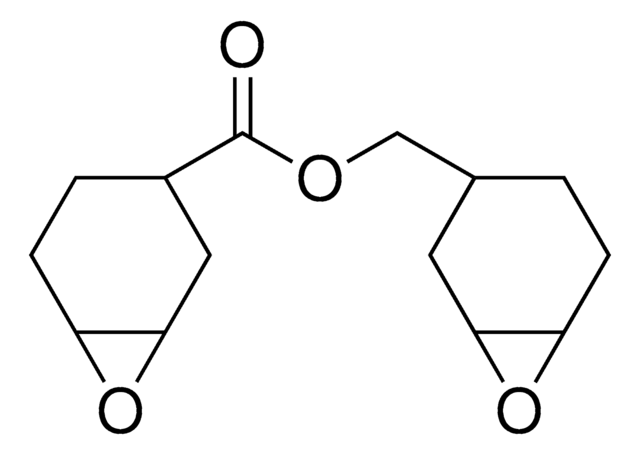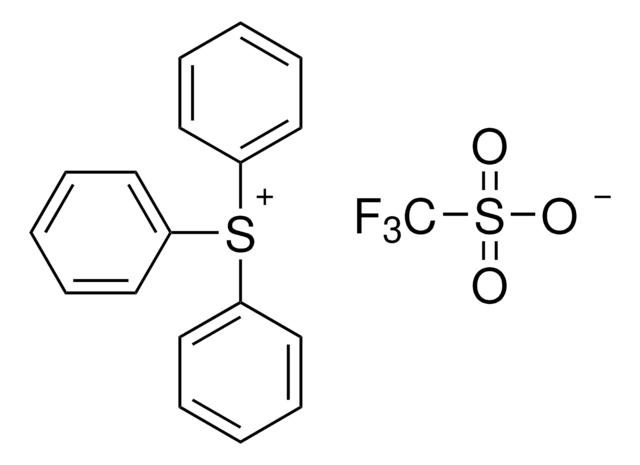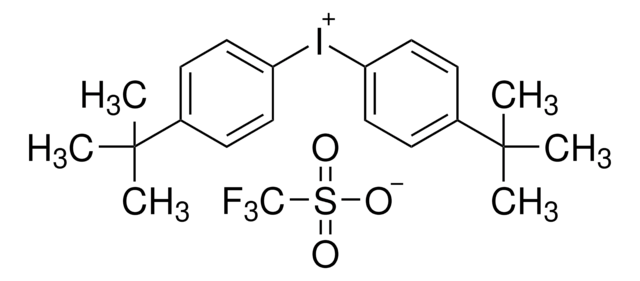654027
Triarylsulfonium hexafluoroantimonate salts, mixed
50 wt. % in propylene carbonate
About This Item
Recommended Products
concentration
50 wt. % in propylene carbonate
refractive index
n20/D 1.502
bp
>220 °C
density
1.410 g/mL at 25 °C
SMILES string
F[Sb-](F)(F)(F)(F)F.F[Sb-](F)(F)(F)(F)F.F[Sb-](F)(F)(F)(F)F.S(c1ccccc1)c2ccc(cc2)[S+](c3ccccc3)c4ccccc4.S(c5ccc(cc5)[S+](c6ccccc6)c7ccccc7)c8ccc(cc8)[S+](c9ccccc9)c%10ccccc%10
InChI
1S/C36H28S3.C24H19S2.18FH.3Sb/c1-5-13-31(14-6-1)38(32-15-7-2-8-16-32)35-25-21-29(22-26-35)37-30-23-27-36(28-24-30)39(33-17-9-3-10-18-33)34-19-11-4-12-20-34;1-4-10-20(11-5-1)25-21-16-18-24(19-17-21)26(22-12-6-2-7-13-22)23-14-8-3-9-15-23;;;;;;;;;;;;;;;;;;;;;/h1-28H;1-19H;18*1H;;;/q+2;+1;;;;;;;;;;;;;;;;;;;3*+5/p-18
InChI key
YASCSMWRFXPFOO-UHFFFAOYSA-A
Looking for similar products? Visit Product Comparison Guide
Related Categories
General description
Application
- 3D Printing Fabrication of Amorphous Thermoelectric Materials: This study explores the use of triarylsulfonium hexafluoroantimonate salts as cationic photoinitiators in the fabrication of thermoelectric materials with ultralow thermal conductivity, highlighting their role in the processing of thermoelectric polymers (M He et al., 2015).
- Onium Salts for Cationic Polymerization: Discusses the high yields and functionalities of mixed triarylsulfonium salts in cationic polymerization processes, providing a pathway to synthesize asymmetrical triarylsulfonium salts (DIR Taschner, 2023).
- Cationic UV-curing of Epoxidized Biobased Resins: This paper investigates the dual UV and visible light curing of biobased resins using triarylsulfonium hexafluoroantimonate salts, emphasizing its applications in sustainable polymer chemistry (C Noè et al., 2020).
- Photocurable Epoxy Acrylate Coatings: Examines the dual cationic and radical photocrosslinking of epoxy acrylate coatings using triarylsulfonium hexafluoroantimonate salts, focusing on the properties of hybrid polymer networks (P Bednarczyk et al., 2021).
- Recent Advances in Monocomponent Visible Light Photoinitiating Systems: This study features a system using triarylsulfonium salt as a photoinitiator for advanced polymerization techniques, demonstrating the versatility of these salts in polymer chemistry (F Dumur, 2023).
Signal Word
Warning
Hazard Statements
Precautionary Statements
Hazard Classifications
Acute Tox. 4 Inhalation - Acute Tox. 4 Oral - Aquatic Chronic 2 - Eye Irrit. 2
Storage Class Code
10 - Combustible liquids
WGK
WGK 3
Flash Point(F)
>284.0 °F - closed cup
Flash Point(C)
> 140 °C - closed cup
Personal Protective Equipment
Certificates of Analysis (COA)
Search for Certificates of Analysis (COA) by entering the products Lot/Batch Number. Lot and Batch Numbers can be found on a product’s label following the words ‘Lot’ or ‘Batch’.
Already Own This Product?
Find documentation for the products that you have recently purchased in the Document Library.
Customers Also Viewed
Our team of scientists has experience in all areas of research including Life Science, Material Science, Chemical Synthesis, Chromatography, Analytical and many others.
Contact Technical Service












